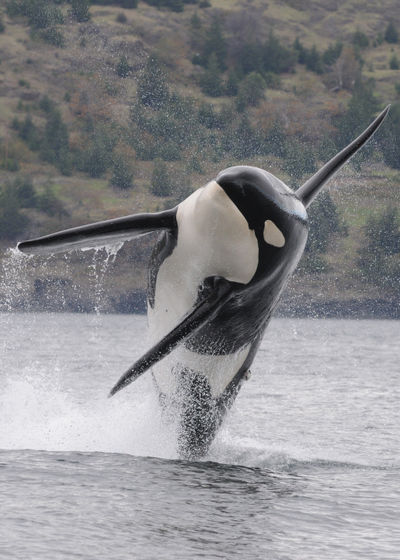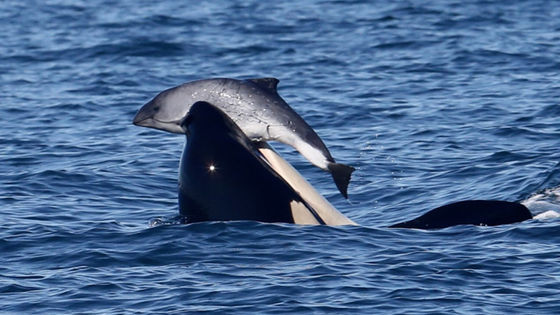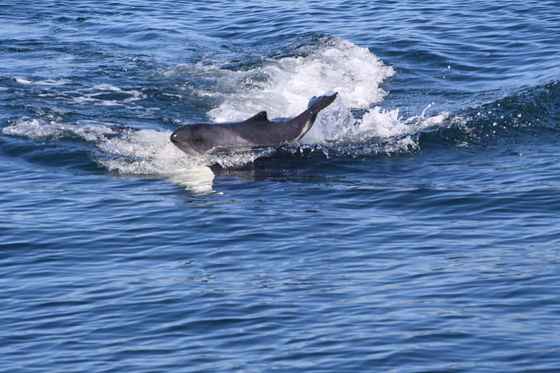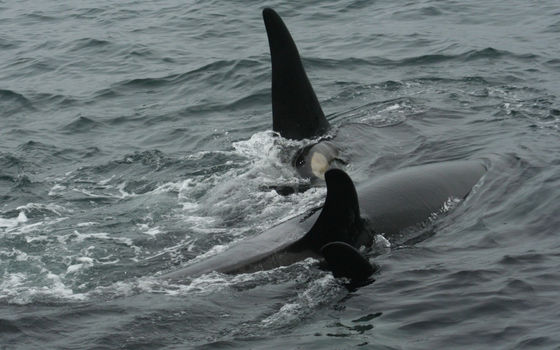Orcas play by killing dolphin calves, experts say, as part of hunting practice or as a pastime for mother orcas who have lost their calves.

Killer whales are sea hunters that
Harassment and killing of porpoises (“phocoenacide”) by fish‐eating Southern Resident killer whales (Orcinus orca) - Giles - Marine Mammal Science - Wiley Online Library
https://onlinelibrary.wiley.com/doi/10.1111/mms.13073
Why Are Killer Whales Harassing and Killing Porpoises Without Eating Them? | UC Davis
https://www.ucdavis.edu/climate/news/why-are-killer-whales-harassing-and-killing-porpoises-without-eating-them
Orcas are harassing and playing with baby porpoises in deadly game that has lasted 60 years | Live Science
https://www.livescience.com/animals/orcas/orcas-are-harassing-and-playing-with-baby-porpoises-in-deadly-game-that-has-lasted-60-years
Some cetaceans, to which killer whales and dolphins belong, play with and harass small porpoises. The behavior of ``phocoenacide/porpicide'' (both meaning porpoise killing), in which the target is attacked for up to five hours until it dies even though it is not a prey, has been observed for a long time, but killer whales and dolphins I didn't understand the reason for doing such a thing.
In particular, the endangered Southern Resident Orca (southern resident killer whale) mainly eats fish, so it is unlikely that they would attack dolphins for food, and the principle of their behavior is considered puzzling. I am.

by
To solve a mystery that has puzzled marine biologists for years, a research team led by Deborah Giles, a killer whale researcher at the University of Washington, used observations recorded from 1962 to 2020 to find out what killer whales do. We identified and analyzed cases of harassment or killing of porpoises.
As a result, a total of 78 cases were found. Of these, 28 were ``porpoise kills,'' in which the porpoise died, and in the remaining 50 cases, it was unknown whether the dolphin was alive or dead. Of the 40 cases in which the age of the dolphin targeted was confirmed, 32 were of newborn or baby dolphins, and the remaining were of subadult or adult dolphins. Additionally, no predatory behavior was observed in all cases.
Attacks by killer whales always begin by chasing dolphins, and once they have caught them, they use various methods to catch the dolphin, such as pushing the dolphin with their head, holding it in their mouth, or balancing it on their body. I was toying with it.
Below is an example of a porpoise kill photographed on September 21, 2016. The baby porpoise held in its mouth eventually drowned.

The following photo was taken on September 21, 2019, and shows a killer whale underwater lifting a baby porpoise for balance. The dolphin eventually swam away and was not confirmed alive or dead.

In most cases, specifically 60 or 77% of the cases, two or more killer whales participated in the attack, leading Giles and his colleagues to conclude that ``these behaviors are a form of social play.'' I did.
Giles and his colleagues believe that orcas play with dolphins for three purposes:
◆1: Social play
This is a behavior that killer whales use to bond, communicate, or just have fun with their pod members, and can help foster coordination and teamwork in the pod.
◆2: Hunting practice
Baby dolphins are similar in size to salmon, the main food source for killer whales, so they are perfect for honing their hunting skills. For example, when young killer whales and their mother killer whales play with dolphins, Giles said they can be seen purposely stopping to let the dolphins run away before chasing after them.
◆3: Miss mothering behavior
The following example shows a killer whale trying to comfort a baby porpoise. The baby dolphin eventually swam away to its original mother.

Giles said: ``Mismothering behavior, also known to scientists as 'displaced epimeletic behavior,' is caused by orcas having limited opportunities to care for their young. Our previous research found that nearly 70% of pregnant southern killer whales miscarry or die soon after birth due to malnutrition. I'm doing it,' he explained.
In their paper, the research team acknowledges that the mystery of killer whale attacks on dolphins is still not completely solved. On the other hand, this study confirms that this behavior is not intended to be used as food, and also reveals that this play has spread throughout the orca pod over the course of 60 years, spanning generations. .
Commenting on the results of the study, Giles said: 'Orcas are very complex and intelligent animals. We found that harassment of dolphins can be passed down through generations and across social groups. , is an example of an amazing killer whale culture.'
Related Posts:







